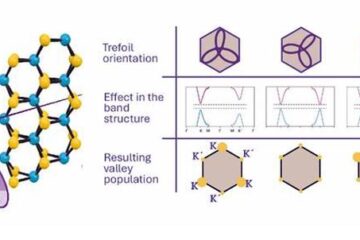Slide Projector Kills Herpes Simplex Virus

A lot of people suffer from herpes for all their lives. The herpes simplex virus (Type 1) constantly inhabits the organism revealing its presence from time to time. Once highly active anti- herpes drugs were developed (acyclovir and phosofonoacetic acids), the virus responded with new forms resistant to theses drugs. The Belorus researchers from the State Scientific Research Institute of Epidemiology and Microbiology, Ministry of Health, Republic of Belorus, and the Institute of Photobiology, National Academy of Sciences of Belorus, have suggested to fight these mutant viruses by the photodynamic inhibition method.
The method is based on the photosensitive reactions, which take place in biological systems. Researchers all over the world are actively developing new methods based on these reactions to cure various diseases. The essence of the method is that photosensitizer substances interact with the sick cells or infection pathogene. The above substances get destroyed under the influence of the visible light and form free radicals, including active forms of oxygen, which easily oxidize proteins, lipids and other biologically important molecules. Photosensitizers are of different types, but the Minsk researchers have chosen merocyanins, which bundle with diverse viral shells including the herpes simplex virus (Type 1).
The experiments were carried out with the cell culture of the kidney of the African green talapoin (Cercopithecus aethiops), infected by the herpes simplex virus (Type 1). Consequences of infection can be noticed already in 4-5 hours: the cells start to divide intensely, they merge with each other, foreign impurities appear in them, besides there are other typical indications perfectly visible through a microscope. Within 48-56 hours, the cells take the shape of a ball, flake away from the walls of a flask where they were grown up and all of them get killed. It was decided to annihilate the infected cells.
The cells of the green talapoin interact well with ? merocyanin MC 540 (about a billion molecules of photosensitizer bundle with each cell). Bundling of merocyanin MC 540 with infected cells depends on the stage of infection: it increases by approximately 22%, when the virus sticks round the cell, at the early stages of virus reproduction bundling remains on the same level and it decreases when virus particles get mature. Viruses synthesize their proteins with the help of the cell captured by them, due to that the cellular membrane structure slightly changes and acquires increased affinity with merocyanin. Thanks to that, infected cells actively interact with merocyanin MC 540, that is why they can be annihilated more or less selectively. The researchers have selected such a sensitizing agent doze and lighting conditions which annihilate mainly infected cells. For lighting, the researchers used a common slide-projector “Peleng 500 ?” (KGM lamp, 150 Wt).
The cells infected by the herpes virus culture mutants insensitive to traditional drugs die. The virus is incapable of propagating itself in the dying cells, and this the way the researchers plan to stop the infection development. The scientists assume that thephotosensitizer damages not only infected cells, but the viruses as well. According to the researchers, the photodynamic therapy may become an efficient remedy capable to stop herpes virus infections. It is most important to utilize this therapy in clinical practice, if the patients are infected with a virus resistant to the drugs. However, it is still a long way to go from the dish with the green talapoin’s cells culture through to clinical trials and particularly practice.
Media Contact
More Information:
http://www.informnauka.ruAll latest news from the category: Health and Medicine
This subject area encompasses research and studies in the field of human medicine.
Among the wide-ranging list of topics covered here are anesthesiology, anatomy, surgery, human genetics, hygiene and environmental medicine, internal medicine, neurology, pharmacology, physiology, urology and dental medicine.
Newest articles

Targeted use of enfortumab vedotin for the treatment of advanced urothelial carcinoma
New study identifies NECTIN4 amplification as a promising biomarker – Under the leadership of PD Dr. Niklas Klümper, Assistant Physician at the Department of Urology at the University Hospital Bonn…

A novel universal light-based technique
…to control valley polarization in bulk materials. An international team of researchers reports in Nature a new method that achieves valley polarization in centrosymmetric bulk materials in a non-material-specific way…

How evolution has optimised the magnetic sensor in birds
The magnetic sense of migratory birds is probably based on the protein cryptochrome 4, and a genetic study has now provided further support for this theory. A team of researchers…





















